MSI FM2-A85XA-G65 Review: Know Your Platform
by Ian Cutress on December 11, 2012 1:21 AM EST- Posted in
- Motherboards
- MSI
- FM2
- A85X
MSI FM2-A85XA-G65 Software
If the BIOS section of a motherboard is currently focusing on interaction, the software side of the package should be focusing on consolidation. When it comes to software, we do not need separate software for the fan controls, for the Ethernet options, for the overclock options, for the power options, and so on. Having everything in one interface reduces cluttering icons on the desktop and start menu in exchange for one or two extra clicks on an interface. It is true that some companies do not care at all for their software, leaving it blank or not updated in several years – MSI have a somewhat mixed approach to the software system.
Starting with the installation disk, while there are no instructions as to what to do, the main command is the ‘Total Installer’ in each menu. For the drivers, we can get everything installed at the click of a button after an options menu comes up for users to deselect unwanted drivers. Similarly for software, except as per our normal testing we disable any installed anti-virus or firewall included in the package.
MSI split their software package across multiple programs in an attempt to cover all the bases.
MSI Control Center
If any piece of the software package sounded like sitting in the Captain’s chair of the Enterprise, then the Control Center has the name down to a tee. Control Center gives several menus including Overclocking, the OC Genie, Green Power (includes fan controls), recording and mobile control.
The overclocking part of CC gives the user access to the basic clock and voltage controls for the CPU, and the voltage controls for the memory. These options are also paired with detailed screens about the features of the motherboard, the CPU and the memory as shown above. If a change is unable to be completed in the OS, the software requests a system reboot to make the change.
The OC Genie part of CC is the automatic overclocking center of the motherboard. One click of it being enabled and the next boot will offer a default overclock based on the system at hand. Rather than the probing OC solution used by ASUS’ Extreme mode or Gigabyte’s Auto Tuning, this calls up a table of reasonably safe OC settings based on the hardware used and implements it. While it may not be the best overclock possible from the kit the user has, it does provide a one button OC.
The Green Power option is one I find particularly interesting, as shown below:
Here we get a basic two point gradient for the fan in terms of temperature against RPM. Whether this is the true fan RPM as a function of the fan profile, or as a PWM value it is unsure. There is no active testing of the fan profiles, so one would assume it works on the assumption that 0-5% power is ~0 RPM and the RPM value raises linearly with power (i.e. the wrong way to assume fan profiles). Nevertheless, I like the fact that the software plots the current fan speed as a function of time – this allows the user to see the course the fan takes based on load. What would be good is if this bit of software also had an option to apply load to allow the user to see the differentiation.
The recording section is a rather well laid out bit of software that automatically plots any temperature sensor, fan sensor, voltage or CPU utilization against time, along with options to define warning limitations.
The Mobile Control menu is something we are seeing more of from the motherboard manufacturers – letting users adjust settings on the fly via their mobile device or tablet.
Teaming Genie
MSI are a big fan of link aggregation – i.e. using two compatible NICs to act as a single connection. While this will not speed up your internet speed, it may allow a user to speed up file transfer over a network when dealing with two hosts, or if the machine is on a 10 GbE network. There are clearly possibilities in the SOHO NAS arena, although with the FM2-A85XA-G65 we are limited to a single Realtek NIC to begin with. Users wanting to take advantage of Teaming Genie will need to purchase a PCIe NIC add-in card.
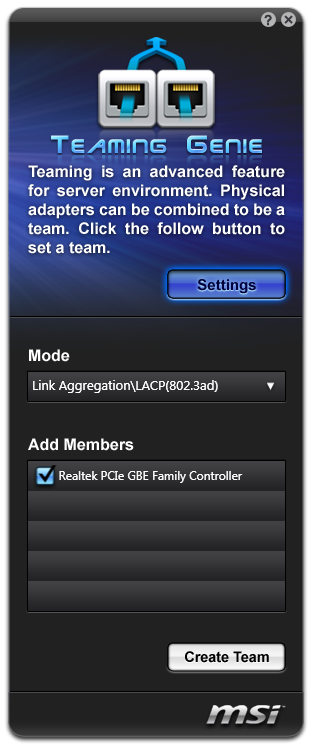
Live Update 5
Every motherboard in this modern area should be bundled with software that allows it to check with online servers for updates. It seems a simple idea in principle – allow the users to have the best up-to-date experience with their hardware to take advantage of updates. This has become the de-facto standard in the graphics card area, with both AMD and NVIDIA building in update systems for their drivers - but yet very few motherboard manufacturers actually do this. MSI do, in the form of Live Update 5.
This software does a scan of the local drivers, the BIOS on the motherboard, and software present. It correlates this to the online database at MSI, and then offers potential downloads. All the options can be downloaded and installed at the click of a button under Total Installer, making the processes almost painless. The only malady with this approach is that MSI fail to tell the user how big these updates are going to be – meaning if you have to download 150 MB of audio codec, you will only be able to tell with guess work. A minor update will make Live Update 5.1 a little easier to handle.
MSI Suite
In order to get the best of MSI software, we have the option to install MSI Suite. This gives the user a small drop down menu on the desktop filled with MSI relevant icons to the other software installed. It is a neat idea, if a little invasive on normal usage. The best bit is that it essentially keeps tabs on Live Update for you, telling when updates are available. There are perhaps better ways to offer these options, but it is something that no other manufacturer is doing.
Easy Viewer
Are you fed up of the basic Windows image viewer? No, me neither. Though MSI have decided it needs a bit of an upgrade, and provide users with Easy Viewer as shown below.
There are basic options for rotation, resizing, brightness and so forth. Personally I actually use FastStone Image Viewer (one of the benchmarks in our testing methodology) which does this a lot better and is a free download.
Click BIOS
Most motherboard manufacturers are aware that the BIOS is actually a seldom used interface in the majority of systems. While enthusiasts are likely to go around and probe the options, or the odd gamer wanting a bit more performance, the majority of users will not know that it exists. I would only just about trust my father or brother to modify their BIOSes correctly, but only because they have been trained.
MSI have decided it is time to bring the BIOS to the user, rather than the other way around. By having some official looking software that can alter the BIOS options, as well as look like the BIOS, it can offer the potential to feel safer than modifying the BIOS directly. Enthusiasts may disagree, but MSI is not targeting enthusiasts with Click BIOS – they are targeting people like my father or brother.
Other software included in the disk comes by the name of Super-Charger (quick USB charging utility) and Network Genie (the Realtek NIC management software with an MSI skin).


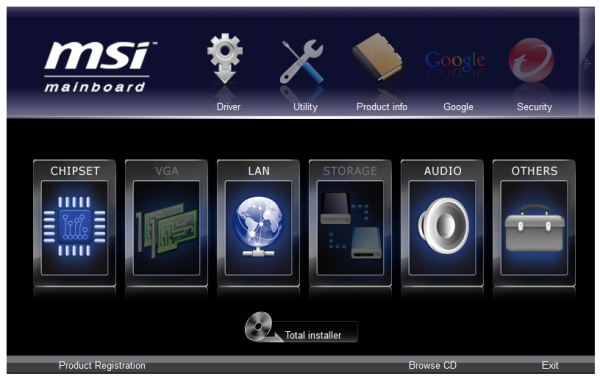
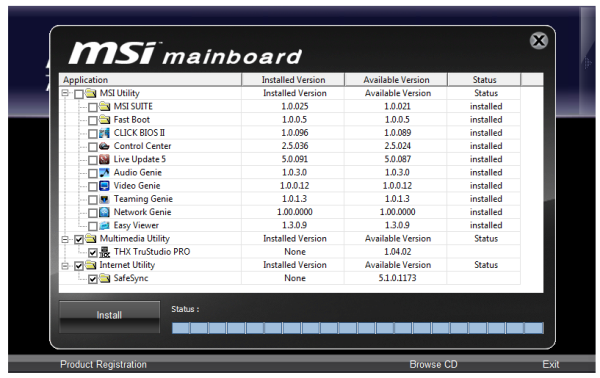


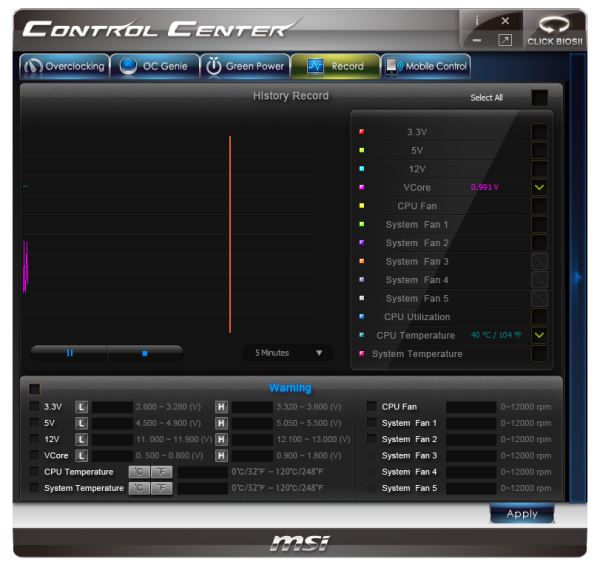

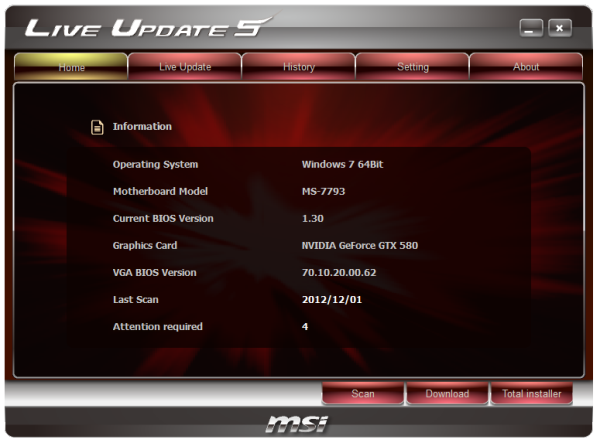

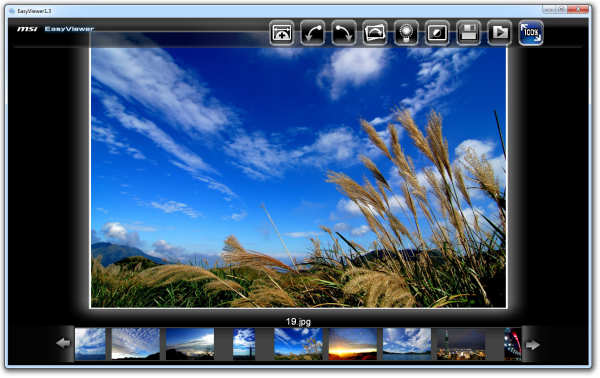
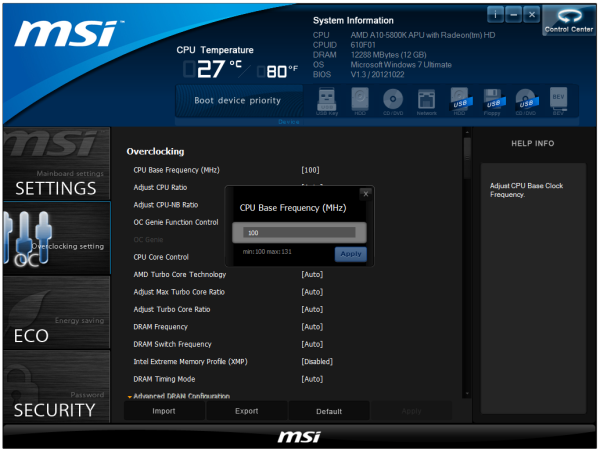














11 Comments
View All Comments
torp - Tuesday, December 11, 2012 - link
It makes no sense to build a system like that, you'd go FM2 if you want to use the integrated video... and then a 3-400W power supply, or even a PicoPSU would suffice.The power consumption test basically gives no useful information.
axelthor - Tuesday, December 11, 2012 - link
If you'd read the article instead of just skimming through it an looking at the graphs you would know why.ssj3gohan - Tuesday, December 11, 2012 - link
Yeah, but just keep in mind that for almost all reviews (especially on anandtech) the power consumption figures are just there as a checkbox feature of the review, they rarely if ever mean something useful. Judging from their more polished reviews and the podcast, it's not a case of lack of intelligence or craftmanship that they bodge up every power measurement, it just seems that they don't have enough time to properly execute this part of a review.So, if I start slagging off these otherwise awesome people I should give them some advice as to how they can properly execute this, right?
First and foremost, and this is not meant as flaming or anything: if you don't know what you're doing, don't publish it. By 'not knowing' I don't mean you're an idiot but I mean that you do not fully understand all aspects of power consumption. Power consumption is a ridiculously complicated matter, it depends not just on recognizable BIOS features, the high-level OS, drivers and hardware composition, but also to a fairly high level on temperature, implementation quirks/bugs and simply offset errors on voltage regulators. The only way to make a truly level playing field is for the reviewer to orthogonalize *all* these factors. Always use the same OS on the same drive with the same BIOS features enabled and verified as working. Measure, directly, the DC power consumption of all non-motherboard components if you just want to isolate the effect of the motherboard. Orthogonalize power distribution by not measuring AC but going for DC power measurements. NEVER extrapolate or guess (e.g. silentpcreview uses a lookup table to go from AC to DC watts, which is categorically wrong), always measure directly. And last but not least: always do a sanity check, look at the manufacturer's data sheets (they are basically always right) and check your findings with other reviewers. It doesn't matter if you differ somewhere, as long as you have a complete explanation of why it differs and why your numbers are correct.
For instance, Anandtech publishes a lot of SSD reviews and always does a power consumption test. These are basically all wrong, as are nigh-on all other SSD power consumption figures on other review sites. They test idle power consumption under a fairly old linux kernel that apparently doesn't understand the DIPM (device initiated power management) power management feature. This is a feature that is supported on every major OS release and chipset since Vista and greatly reduces idle power consumption. The consequence is that measured idle power consumption is galaxies away from actual real-world idle power consumption. Not only that, but they apparently forget that on the first page of their review is a table with manufacturer specs that clearly states *much* lower power consumption. Why doesn't that make them scratch their head and think 'hey... maybe we did something wrong? Shouldn't we go check up on this issue?'. They check every other possible performance metric on these drives and aren't satisfied until everything is explained into great detail, so why not also put some effort into power consumption metrics?
As a result, even though intel specs almost all its consumer drives at 75-150mW idle and 150-400mW load power consumption, all reviews of intel SSDs state their idle power consumption as 0.6W and load at 1.2 or something. So if you're looking for a drive with the lowest possible power consumption for use in e.g. a windows tablet, ultrabook or laptop, you won't find any useful information on the web.
/rant
Wwhat - Wednesday, December 12, 2012 - link
That might scientifically make sense, but in real life the only reason to know the power is to see how much AC you pull and have to pay for (or generate), so in fact you only need to measure the AC pull really.cfaalm - Wednesday, December 12, 2012 - link
I think you're both right. Measuring AC pull is only valid in comparison if you use the same PSU on the same voltage. If you go nitpicking over a couple of mV's then even the efficiency curve of the PSU comes into play. I think it's really hard to get it right.IanCutress - Tuesday, December 11, 2012 - link
In order to keep our testing consistent with ALL other motherboard reviews, we test with multiple GPUs and have to have a power supply capable of 3/4 GPUs at full whack with the CPU as well. We use a 1250W Gold power supply, which as noted in the review has a relatively high efficiency - even more so given that I am on the 240 V input.Two important points:
1) We do not have access to every hardware ever released. In my own testing I use the 1250W gold for desktop environments, and a 500W Platinum for mini-ITX environments, because these are the power supplies I own and allow me to complete testing without spending hours changing everything back and forth. We don't have unlimited space to have 18 test beds set up for individual component XYZ either.
2) Even if you feel the individual values mean nothing to you, then as a comparison against other components put in exactly the same position, conclusions can be drawn as to which is better than the others. You examine the gradient of change rather than the absolute value - a technique used often in scientific circles when the absolutes cannot be obtained.
My testing methodology and scientific background that I do have allow for reasoned interpretation and my testing is equivalent to the rigor I placed in my scientific peer-reviewed papers I published. I never aim to mislead or pre-suppose bias on any bit of kit, and only aim to give the readers the best possible explanation with the tools at my disposal.
woogitboogity - Wednesday, January 2, 2013 - link
It is quite simple. They need to keep things consistent when comparing this motherboard and components to others, including all the crazy SLI/CF rigs. So long as you have a decent power supply in terms of quality the supply will not draw more power than it actually needs.SolMiester - Tuesday, December 11, 2012 - link
What is the point of of building APU, then CF with dGPUS?...ridiculous!..frozentundra123456 - Tuesday, December 11, 2012 - link
I agree with what you are saying, but the tested games were surprisingly playable at demanding settings with the right video card(s). However, I cant see buying such a cheap processor, especially an APU, and pairing it high end cards either.It would have been interesting to test something like a 3570k and FX 6300/8350 under the same conditions (with their appropriate MB of course) to see how much faster they were. Surprisingly, it looks like the tests are GPU bound even with a lowly A10 cpu.
Origin64 - Wednesday, December 12, 2012 - link
I still don't get why people are getting so worked up about this. 2.0 x8 offers 95% of the performance, x16 something like 99. We don't need PCIe 3.0 yet. Probably won't for another year or two, at least.